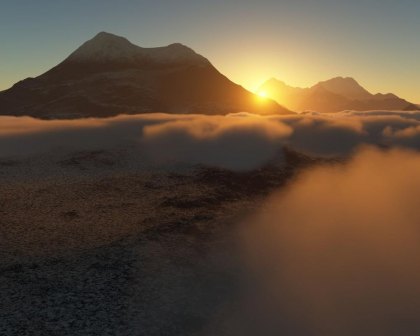Textbooks wrong about 'corridor' route

But scientists say that theory, taught as gospel in schools across the U.S., is wrong. Recent research published in the journal Nature finds that the first Americans are unlikely to have taken the corridor. Here are some questions that show how scientists came to that conclusion:
First of all, when did humans arrive in North America? This question is still debated, but the figure often given is 13,000-14,000 years ago. For example, an article in The Proceedings of the National Academy of Sciences of the United States reported on evidence that seven horses and one camel were attacked and butchered by prehistoric hunters near a river crossing in Canada 13,300 years ago.
How does the ice-free corridor figure in? Roughly 14,000 to 15,000 years ago, “glacial retreat opened an approximately 1,500 kilometer (932 miles) long corridor between the ice sheets,” according to the article, Postglacial viability and colonization in North America’s ice-free corridor, based on research led by Eske Willerslev, an evolutionary geneticist at the University of Copenhagen, Denmark.
What can DNA tells us? The research focused on one of the last parts of the corridor to become ice-free -- now partly covered by Charlie Lake in British Columbia and Spring Lake, Alberta, according to a University of Copenhagen news release. Scientists stood on the frozen lake during the winter and drilled down into the sediment to gather evidence “including radiocarbon dates, pollen, macrofossils and DNA taken from lake sediment cores.”
Analyzing this DNA allowed researchers to understand how the ecosystem developed.
What does this research tell us? Through their analysis, scientists have been able to discern the biological history of the interior ice-free corridor. “It started as a barren ground with nothing really,” Willerslev said in a video posted on YouTube (below). “In many textbooks ... you can see an arrow going from Siberia to Alaska through the interior ice free corridor and down to the southern parts of the Americas – this reflecting how people believe humans were basically populating the Americas.”
That couldn’t be how it happened. “Our study shows this is not possible for the first peoples in the Americas to have taken this route, simply because it wasn’t biologically viable before 12,600 years ago. …. There was nothing to live from.”
He added that it is possible and even likely that the ice free corridor was used later, in the period following 12,600 years ago -- but not by the first humans on the continent.
So how did humans populate the continent? Scientists aren’t sure, Willerslev said. “But I think the most likely is the West Coast route, where they are bypassing the icecaps through the sea, so to speak, along the West Coast of North America.”
To know more:
- University of Copenhagen, Denmark: Textbook story of how humans populated America is “biologically unviable”, study finds
- Nature: Postglacial viability and colonization in North America’s ice-free corridor
Related:
Iron from meteorite used for Egyptian dagger
Family ties: Millions linked to Genghis Khan
If you would like to comment, give us a shout, or like us on Facebook and tell us what you think.

